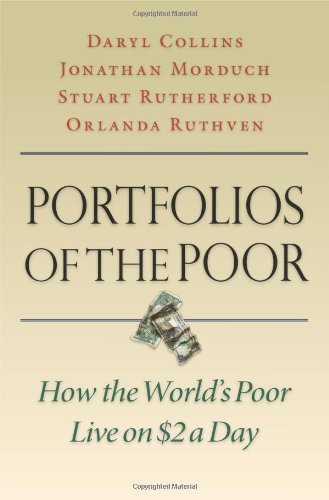Meaning
Underwriting is the process where an individual or company takes on financial risk for a certain fee, it is a type of insuring. The insured risk involves a promise to cover loans or investments if something does not go according to plan.
The term underwriter originates from the historical practice of having the risk-bearers writing their name and signature on a piece of paper and promising the total amount of risk they were willing to take on for a specified charges.
It refers to the systematic procedure used by financial service companies, such as banks, insurance companies, or big investors, to determine and price the risk from a potential client.
Underwriting activity involves researching and assessing the percentage of risk of each entity before deciding whether to take on that risk. This research is necessary in order to decide what borrowing rates for loans should be and to establish suitable charges/fees in order to cover the true cost of insurance policyholders. An underwriter can refuse to cover an entity if they find that the risk is too high to handle.
How Does Underwriting Work?
The underwriting process starts with an in-depth and systematic analysis of a potential borrower’s credit-worthiness, including employment history, salary, financial statements and performance, general information, and independent credit reports.
The process is intended to evaluate the credit necessity, the quality and quantity of the collateral assets to be used to support the borrowing, and the borrower’s ability to repay the debt.
Upon completion of a formal underwriting process and a summary of report presented to a credit committee within the lender, the lender will then decide either to approve or reject the request for a loan.
Similarly, an insurance company will evaluate the risks of a potential customer for insurance, based on a variety of factors. The bottom line from such an underwriting process is to specify the price for insurance in accordance with its associated risk.
In securities trading, underwriting also includes assessing the risk and pricing the security accordingly. However, the formal underwriting process also involves in which an underwriter agrees to buy the security and then sell it for a profit. The underwriter effectively takes a risk by agreeing to purchase the security at the stated price. In most cases, underwriters will line up buyers for the securities before they take on the security, so that it can “flip” the security to the buyer immediately.
Types of underwriting
- Loan underwriting
- Insurance underwriting
- Securities underwriting
- Real estate underwriting
- Forensic underwriting
1. Loan underwriting
Loan Underwriting involves vetting and calculating risks associated with whether a borrower can pay back a loan based on four factors that determine the level of risk, including:
- Income: It includes estimating whether a borrower’s net-income can cover the monthly payment of the loan. For this a borrower must submit IRS Schedule K-1s, balance sheets, profit and loss sheets and personal and business tax returns as an eligibility proof relevant to the purpose of the loan.
- Appraisal: This step is done to ensure that the purpose for taking a loan (example, purchasing a property) is worth the amount being requested. In this type, an appraiser visits the property or evaluates the purpose of a loan to collect the necessary required information, such as viability or quality of the investment.
- Credit Score: This score helps to evaluate if the borrower is reliable in paying on credit, including loans, EMI and credit cards. The credit score also provides a borrower’s debt-to-income (DTI) ratio, which can be used to analyze whether the borrower can pay back the given credit, as well as other existing loans. If a borrower has a good credit score, they can benefit from a lower interest rate.
- Asset Information: Assets are items that a borrower owns, such as own house, machinery, land, treasury notes, corporate bonds, guaranteed investment accounts, mutual funds and other stock holdings. These items have value and can be acquired and sold to cover the loan if the borrower cannot pay it back.
At the end of this processes, a credit can be denied. In this case, the borrower must be given a valid reason for the loan rejection. The loan can also be filed as suspended if there are missing documents.
2. Insurance underwriting
Insurance underwriting is the process of evaluating a customer for his life, health and wellness, property and rental or other types of insurance. This process determines the risks of filing large or frequent claims and assessing how much coverage a person should be given, how much premium they should pay and how much an insurance company is likely to pay to cover the policyholder.
In the case of life insurance, the underwriting process involves assessing the risk of the client wanting to get insured by determining his age, occupation, health, family medical history, lifestyle, hobbies and other factors.
3. Securities underwriting
Securities underwriting is when an investor or investment bank wants to know how profitable an investment is likely to be. Examples of securities requiring underwriting include individual stocks as well as debt securities like corporate, government and municipal bonds.
In this process, an investor uses underwriting process to identify profitable securities supplied by a company attempting Initial Public Offering (IPO). Then, the investor sells those securities in the market for a profit.
Underwriters involved in this process form an underwriter syndicate, which is a group of underwriters that buys securities to resell them to new investors who will also sell them to other buyers. When this group makes an income from the difference, it is called an underwriting spread.
The potential investor and underwriter benefit from the underwriting process because the process assesses whether the IPO Company will be able to raise the amount of capital required, thus ensuring the underwriters earn a profit for their service.
4. Real Estate underwriting
Real estate underwriting is done when a person takes a loan to buy a new property.
In this underwriting process. The background of the borrower is assessed, as well as the property which the borrower wants to purchase by taking a loan. This process will determine whether the property can redeem its own value if the borrower cannot pay back the loan.
5. Forensic underwriting
Forensic underwriting occurs in case a borrower fails to pay back a loan. In this case, the borrower will be assessed again to evaluate whether the person is suitable to be given a new credit.
People are also are reading…..
References
- https://www.investopedia.com/terms/u/underwriting.asp
- https://economictimes.indiatimes.com/definition/underwriting
- https://www.indeed.com/career-advice/career-development/what-is-underwriting
- https://cleartax.in/g/terms/underwriting
- https://www.rocketmortgage.com/learn/what-is-underwriting
- https://groww.in/p/underwriter/
- https://debitoor.com/dictionary/underwriting
- https://smartasset.com/insurance/underwriter





